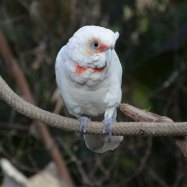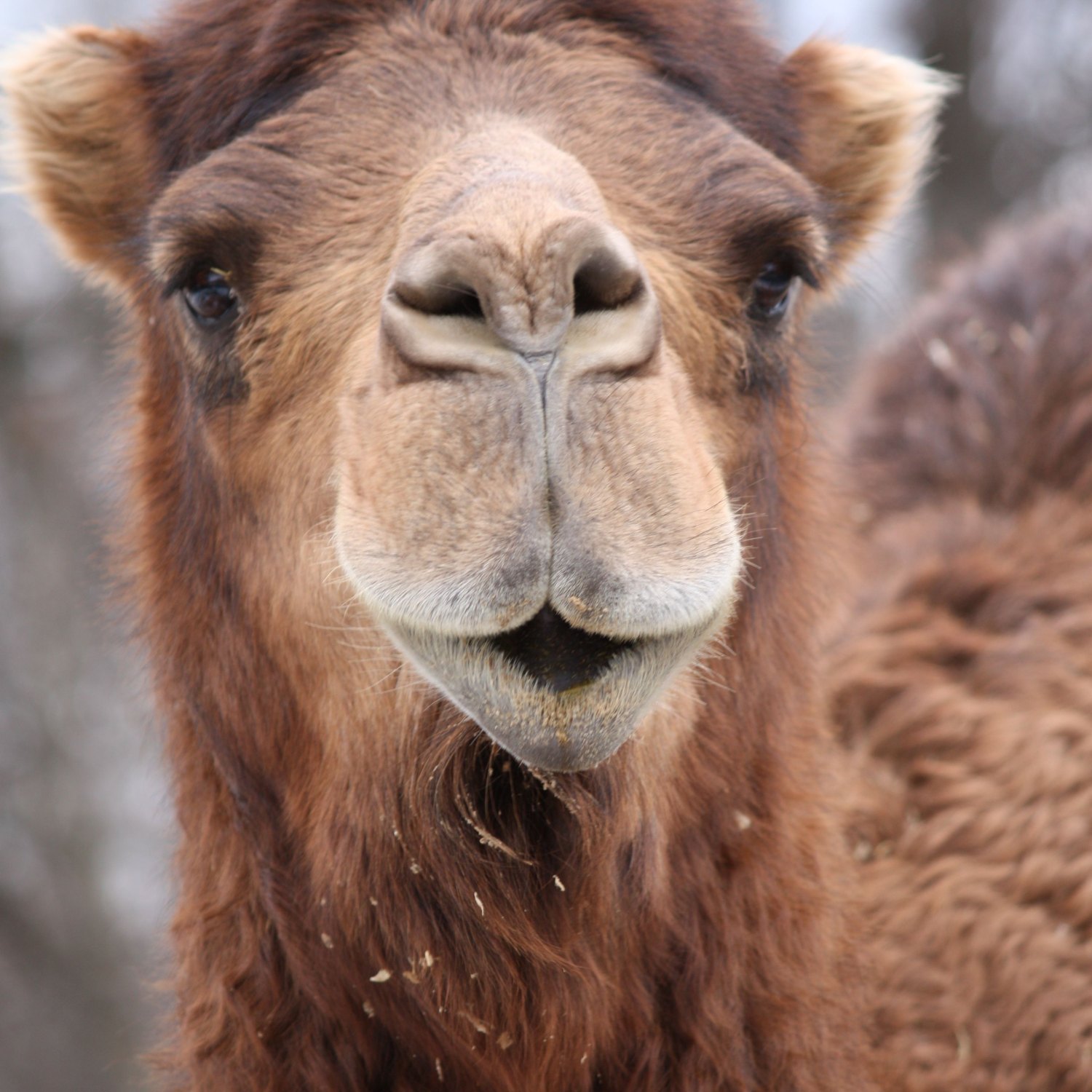
Camel
2 to 3 meters
Camels are fascinating animals known for their ability to survive in harsh desert conditions. These large, sturdy creatures can grow up to 2-3 meters in length and are mostly found in desert areas. Belonging to the Camelidae family, camels have adapted to their environment with their humps storing fat for energy and their thick fur to protect them from the sun. These majestic creatures are truly a wonder of nature.
Animal Details Summary:
Common Name: Dromedary Camel
Kingdom: Animalia
Habitat: Deserts and arid regions
The Fierce and Resilient Dromedary Camel: Surviving in the Harshest Environments
The desert can be an unforgiving place, with scorching heat, unpredictable sandstorms, and scarce water sources. It takes an extraordinary animal to thrive in such harsh conditions. Enter the dromedary camel, also known as the Arabian camel or one-humped camel. These majestic creatures have been able to survive in the desert for thousands of years, making them a crucial part of the desert ecosystem and an integral part of human societies in the region Camel.Scientifically known as Camelus dromedarius, the dromedary camel is a member of the animal kingdom, Phylum Chordata, and class Mammalia. It belongs to the order Artiodactyla, which consists of even-toed hoofed animals, and the family Camelidae, which includes camels and llamas. This remarkable animal has captured the attention of researchers and animal lovers alike, and for good reason. Let's dive into the impressive features of the dromedary camel and discover why it is truly a fascinating and resilient animal.
A Habitat Fit for Survival
The dromedary camel is native to the deserts and arid regions of Northern Africa, the Middle East, and South Asia. These areas, known as the "Camel Belt," are characterized by extreme temperatures, low rainfall, and rocky, sandy terrain. It is a habitat that poses numerous challenges for many animals, but not for the dromedary camel. They have well-adapted features that allow them to withstand the climate and thrive in this harsh environment.One of the most remarkable adaptations of the dromedary camel is its ability to conserve water Cassowary. Unlike most mammals, which lose a significant amount of water through sweating and respiration, dromedary camels have thick fur coats that protect them from the sun and retain moisture. Additionally, they have the ability to adjust their body temperature to reduce water loss through sweat. These features are essential for their survival in the extreme heat of the desert.
A Herbivorous Diet
Despite living in one of the harshest environments on Earth, the dromedary camel is a herbivore. They feed mainly on desert vegetation such as leaves, seeds, and stems, but they can also eat thorny plants and even woody shrubs if necessary. This versatile diet is another factor that contributes to their survival in the desert. They can go several days without food, and when they do find food, they can consume large quantities to store fat reserves for when food is scarce.A dromedary camel can drink up to 57 liters of water in less than 15 minutes, which helps them survive long periods without access to water. This is possible because their red blood cells are able to expand and contract, allowing them to store more water without becoming dehydrated. In fact, camels can survive for days, and sometimes weeks, without drinking water, making them true masters at living in the desert.
A Global Presence
The dromedary camel originated in Saudi Arabia and remains an essential part of the country's culture and heritage. They are often referred to as the "ships of the desert" because of their ability to carry heavy loads and transportation purposes.However, dromedary camels can now be found in many other countries around the world. They have been domesticated and introduced to regions with similar climates and terrain, such as Australia, North America, and parts of South America. Dromedary camels have also been introduced for tourism purposes in countries like Mongolia and Kenya.
An Animal of Unique Color and Shape
At first glance, dromedary camels may seem like large, clumsy animals. But upon closer inspection, you will notice their impressive features that make them well-suited for life in the desert. They have tan, beige, or brown fur that blends in with the desert sand, providing them with camouflage from predators.One of the most distinct features of a dromedary camel is its single hump on its back. This hump is not for storing water as commonly believed, but rather for storing fat. Camels can go for days without food, and their humps provide the necessary energy for their survival. When food is scarce, their body metabolizes the fat from their humps, keeping them nourished until they can find food again.
Their large and sturdy bodies also contribute to their ability to survive in the desert. They can grow up to 3 meters in length and weigh between 400 to 600 kilograms, with the males being slightly larger than females. Their sturdy legs and padded feet allow them to walk on the rocky and sandy terrain of the desert without sinking or stumbling.
Surviving for Millennia
The history of dromedary camels dates back thousands of years, with evidence of their domestication being found as early as 2500 BCE. They have played a crucial role in human civilization, particularly in the Arabian Peninsula, as a means of transportation, a source of milk, and a valuable trade commodity.Dromedary camels have also been integral to the survival of nomadic tribes in the desert. These tribes, which have been roaming the desert for centuries, rely on camels for transportation, food, and shelter. They have a religious and cultural significance in these communities and are treated with utmost care and respect.
An Enduring Legacy
The dromedary camel may seem like an ordinary animal at first, but upon understanding its extraordinary features and role in human society and the desert ecosystem, it becomes clear that it is anything but ordinary. They have been able to adapt and survive in one of the harshest environments on Earth, and their resilience and strength are a testament to their enduring legacy.Unfortunately, dromedary camels are facing threats to their survival, primarily due to human activities. Climate change, habitat destruction, and overhunting are among the biggest challenges they face. However, there are efforts being made to protect and conserve their populations, such as captive breeding programs and educational initiatives. It is important to understand the crucial role these animals play in the desert ecosystem and take steps to ensure their survival for generations to come.
In Conclusion
In conclusion, the dromedary camel is a symbol of resilience and strength. They have captured the hearts of many with their unique features and ability to thrive in the harshest environments. Their history and cultural significance make them an essential part of human society, and their role in the desert ecosystem is crucial. It is our responsibility to protect and conserve these animals and ensure their survival for future generations to appreciate and admire. The dromedary camel is truly a fierce and majestic creature that deserves recognition and admiration.

Camel
Animal Details Camel - Scientific Name: Camelus dromedarius
- Category: Animals C
- Scientific Name: Camelus dromedarius
- Common Name: Dromedary Camel
- Kingdom: Animalia
- Phylum: Chordata
- Class: Mammalia
- Order: Artiodactyla
- Family: Camelidae
- Habitat: Deserts and arid regions
- Feeding Method: Herbivorous
- Geographical Distribution: Northern Africa, Middle East, and South Asia
- Country of Origin: Saudi Arabia
- Location: Mostly found in desert areas
- Animal Coloration: Tan, beige, or brown
- Body Shape: Large, sturdy
- Length: 2 to 3 meters
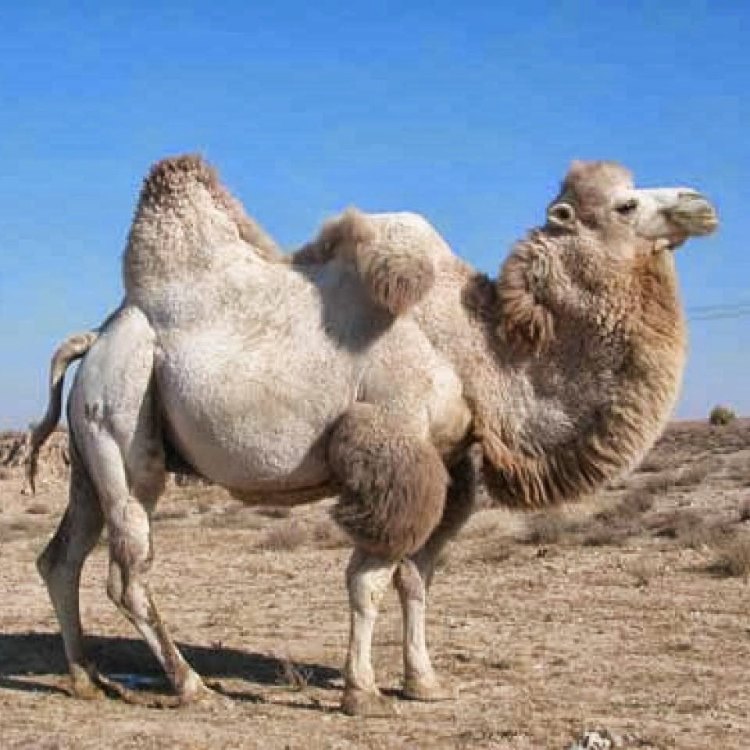
Dromedary Camel
- Adult Size: 1.8 to 2.2 meters tall at the shoulder
- Average Lifespan: 40 to 50 years
- Reproduction: Sexual
- Reproductive Behavior: Polygynous
- Sound or Call: Bellowing
- Migration Pattern: Migratory, follow seasonal food sources
- Social Groups: Herds
- Behavior: Adapted to desert life, can withstand extreme temperatures and water scarcity
- Threats: Predation, habitat loss, and hunting
- Conservation Status: Least Concern
- Impact on Ecosystem: Help maintain desert ecosystems by dispersing seeds
- Human Use: Transportation, milk for consumption, meat, and wool
- Distinctive Features: Single hump on their back
- Interesting Facts: Can store water in their hump, can survive without water for long periods
- Predator: Lions, hyenas, and humans
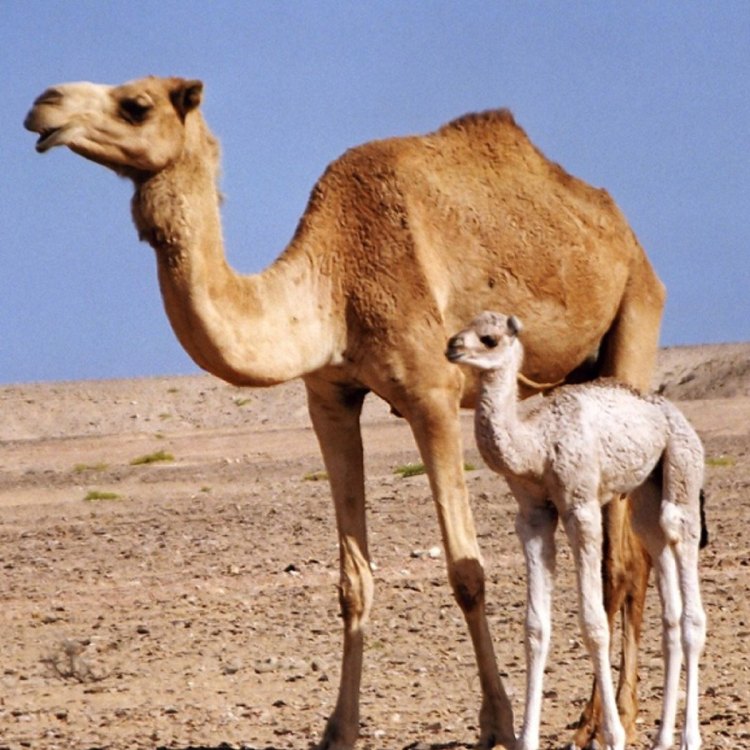
Camelus dromedarius
The Unique Desert Dweller: The Camel
The image of a camel walking gracefully across the desert sands is synonymous with the harsh and unforgiving environment of the Sahara. These magnificent creatures have captivated humans for centuries with their striking appearance and incredible adaptability to desert life. Camels are not just animals used for transportation and tourism but are a vital part of the desert ecosystem and human livelihood. In this article, we will explore the unique features of this desert dweller and the important role they play in their environment PeaceOfAnimals.Com.Adult Size and Average Lifespan
One cannot miss the majestic stature of a camel, standing tall at 1.8 to 2.2 meters at the shoulder. On average, a camel can weigh anywhere from 900 to 1,300 pounds, making them one of the largest land mammals. Their impressive size allows them to navigate through desert terrain with ease, especially in deep sand.
Camels are also known for their long lifespan, with individuals living up to 40 to 50 years in the wild. This longevity is due to their adaptation to the harsh desert environment, making them resilient and able to withstand extreme conditions.
Reproduction and Behavior
Camels are sexually reproducing animals, with males and females engaging in courtship rituals before mating. These rituals involve bellowing sounds and body language to attract a mate Codling Moth. Once a female camel is pregnant, the gestation period lasts for around 13 months, and she will give birth to one calf.
One unique aspect of camel behavior is their reproductive behavior, known as polygyny. This means that male camels will have multiple female partners. This behavior is necessary for the survival of the species, as it ensures the genetic diversity and adaptability of future generations.
Sound or Call and Migration Pattern
The sound of a camel's call is unmistakable in the desert landscape. Camel bellowing is a low, guttural sound that carries for miles, allowing them to communicate with other camels and potentially attract a mate.
Camels are migratory animals, following seasonal food sources in the desert. They are known to travel long distances, sometimes up to 20 miles in a day, in search of food and water. This migration pattern is essential for their survival as they must constantly move to find resources in the arid landscape.
Social Groups and Behavior
Camels are highly social creatures and live in herds led by a dominant male. These herds can consist of up to 30 individuals, mostly females and their offspring. The dominance hierarchy among males is established through physical challenges and body language displays.
Their behavior is distinctly adapted to desert life, allowing them to thrive in an environment where resources are scarce. Camels have a unique ability to conserve water, allowing them to survive in extreme temperatures and go for long periods without water. They can also withstand high water loss and dehydration, making them well-suited for their desert habitat.
Threats and Conservation Status
Like most animals in the wild, camels face threats from predators, habitat loss, and hunting. Lions and hyenas are natural predators of camels, with humans also posing a significant threat through hunting and habitat degradation.
Despite these threats, camels are currently listed as "Least Concern" on the IUCN Red List of Threatened Species. Their adaptability and resilience have allowed them to thrive in their natural habitat, and their population remains stable.
Impact on Ecosystem and Human Use
Camels play a crucial role in maintaining the delicate balance of desert ecosystems. As they travel long distances, they disperse seeds and aid in the growth of new plants, contributing to the diversity and sustainability of the desert landscape. They also provide sustenance for many desert animals, such as insects and birds, who feed off their droppings and leftovers.
Humans have relied on camels for centuries for their transportation, milk for consumption, meat, and wool. Camels are the primary source of income for many desert-dwelling communities and are highly valued for their ability to survive and thrive in harsh conditions.
Distinctive Features and Interesting Facts
The most distinctive feature of a camel is its single hump on its back, giving it an unmistakable silhouette. However, not all camels have just one hump. The Dromedary camel, native to the Sahara, has a single hump, while the Bactrian camel, found in Central Asia, has two humps.
One interesting fact about camels is their ability to store water in their hump. Contrary to popular belief, it is not filled with water but with fat, which can be converted into energy when needed. This adaptation allows camels to survive without water for long periods, making them well-suited for desert life.
Predators and Human Interaction
As mentioned earlier, lions, hyenas, and humans pose the greatest threats to camels. Lions and hyenas mostly prey on young or weakened camels, while humans hunt them for their meat, wool, and other body parts. Overhunting and habitat loss have led to a decline in some camel species, such as the wild Bactrian camel, which is currently listed as critically endangered.
Final Thoughts
From their towering stature to their unique adaptations, camels are truly remarkable creatures. They have not only captured human fascination with their appearance and behavior but are also essential for the functioning of desert ecosystems and human livelihoods. As we continue to learn more about these incredible animals, it is crucial to protect and conserve them for future generations to appreciate and admire. So, let's appreciate the uniqueness of the camel and its vital role in the desert ecosystem.
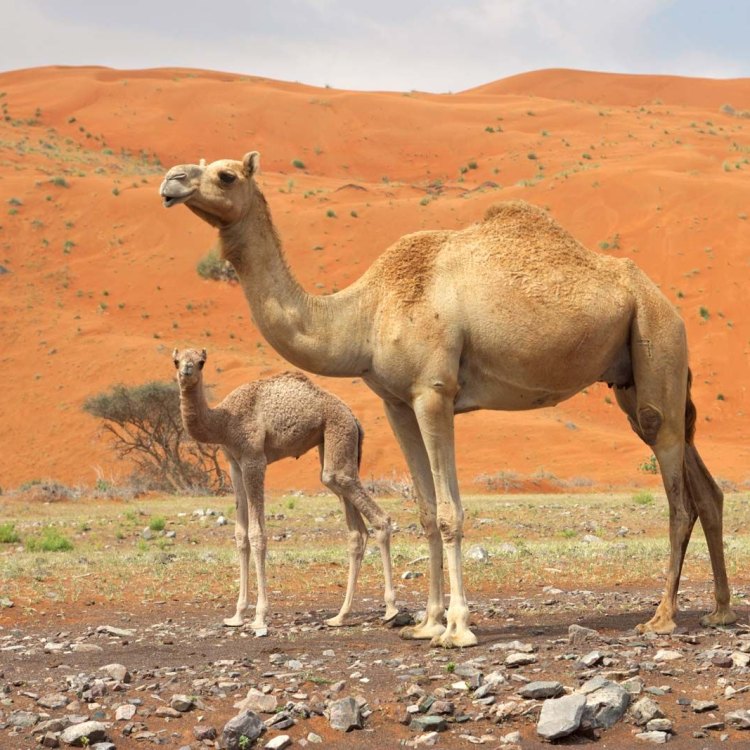
The Fierce and Resilient Dromedary Camel: Surviving in the Harshest Environments
Disclaimer: The content provided is for informational purposes only. We cannot guarantee the accuracy of the information on this page 100%. All information provided here may change without prior notice.






